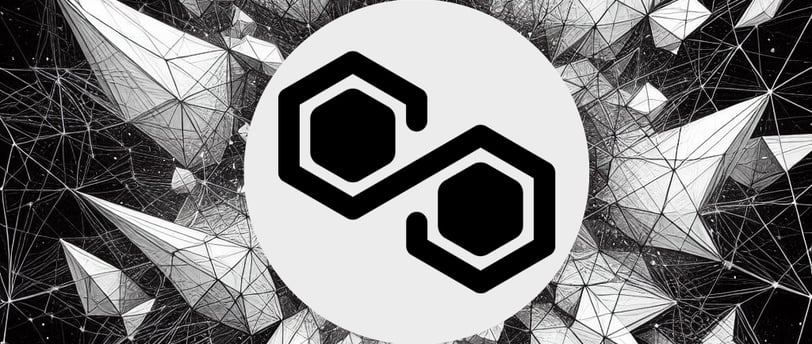Unveiling Polygon: The Scalability Solution for Ethereum's Future
Explore the innovative Polygon platform, a key player in enhancing Ethereum's scalability. Learn how Polygon is transforming blockchain technology with its fast, secure, and scalable solutions for the DeFi and NFT sectors.


The Need for Scalability in Ethereum
Ethereum, the second-largest blockchain platform, has gained immense popularity for its ability to support decentralized applications (dApps), smart contracts, and the issuance of digital assets. However, as the Ethereum network has grown, it has faced significant challenges in terms of scalability.
With the surge in demand for blockchain applications, Ethereum has experienced network congestion, high gas fees, and slower transaction times. These limitations have hindered the platform's potential to scale and accommodate the growing user base.
Introducing Polygon: Enhancing Ethereum's Scalability
Enter Polygon, a layer 2 scaling solution that aims to address Ethereum's scalability issues. Formerly known as Matic Network, Polygon is designed to provide a framework for building and connecting Ethereum-compatible blockchain networks.
Polygon achieves scalability by employing a combination of technologies, including sidechains, plasma chains, and state channels. By utilizing these layer 2 solutions, Polygon enables faster and cheaper transactions while maintaining the security and decentralization of the Ethereum mainnet.
The Technology Behind Polygon
Polygon utilizes a modular architecture that allows developers to choose from a variety of solutions to meet their specific requirements. The core components of Polygon's technology stack include:
Polygon PoS Chain: This is the main chain that acts as a bridge to the Ethereum network. It uses a Proof-of-Stake (PoS) consensus mechanism, making it energy-efficient and scalable.
Sidechains: Polygon supports multiple sidechains, which are independent blockchains connected to the main chain. These sidechains handle transactions and smart contracts, offloading the burden from the Ethereum mainnet.
Plasma Chains: Plasma chains are a type of sidechain that enable high-speed and low-cost transactions. They are particularly suitable for applications that require frequent interactions with the Ethereum mainnet.
State Channels: State channels allow for off-chain interactions between participants, reducing the need for on-chain transactions. This helps in improving scalability and reducing costs.
The Benefits of Polygon
Polygon offers several benefits for both developers and users, making it an attractive solution for enhancing Ethereum's scalability:
1. Scalability and Throughput
By leveraging layer 2 solutions, Polygon significantly improves the scalability and throughput of the Ethereum network. With faster transaction confirmations and lower fees, Polygon enables a seamless user experience for decentralized applications.
2. Interoperability
Polygon is designed to be compatible with existing Ethereum infrastructure and tools. Developers can easily migrate their dApps from Ethereum to Polygon, ensuring compatibility with the broader Ethereum ecosystem.
3. Cost Efficiency
With lower transaction fees and reduced gas costs, Polygon offers cost-efficient solutions for developers and users. This makes it more accessible for a wider range of applications, including DeFi and NFT platforms.
4. Security and Decentralization
Polygon maintains a high level of security by anchoring the sidechains to the Ethereum mainnet. The underlying Proof-of-Stake consensus mechanism ensures the network's decentralization and resilience against attacks.
5. Developer-Friendly Environment
Polygon provides a developer-friendly environment with robust tooling and documentation. Developers can easily deploy and test their applications on Polygon, accelerating the development process.
Polygon's Impact on DeFi and NFT Markets
Polygon's scalability solutions have had a significant impact on the decentralized finance (DeFi) and non-fungible token (NFT) markets. These sectors have experienced explosive growth, but the high gas fees and slow transaction times on Ethereum have limited their potential.
By providing a scalable infrastructure, Polygon has attracted numerous DeFi projects to its network. Platforms such as Aave, SushiSwap, and Curve Finance have already deployed their protocols on Polygon, offering users a more cost-effective and efficient experience.
In the NFT space, Polygon has become a preferred choice for artists, collectors, and marketplaces. The low transaction fees and fast confirmation times make it ideal for minting, trading, and interacting with NFTs. Notable NFT projects like OpenSea, Rarible, and Decentraland have integrated with Polygon to leverage its scalability benefits.
The Future of Polygon
Polygon has emerged as a leading layer 2 scaling solution, and its potential to revolutionize the Ethereum ecosystem is undeniable. As more developers and users migrate to Polygon, the network effect will further enhance its scalability and adoption.
Looking ahead, Polygon aims to continue expanding its ecosystem, attracting more projects, and fostering innovation in the blockchain space. The team behind Polygon is actively working on research and development to further improve scalability and introduce new features.
With its commitment to enhancing Ethereum's scalability, Polygon is poised to play a crucial role in shaping the future of blockchain applications. By providing a scalable and cost-efficient infrastructure, Polygon opens up new possibilities for developers and users, ushering in a new era of decentralized applications.
